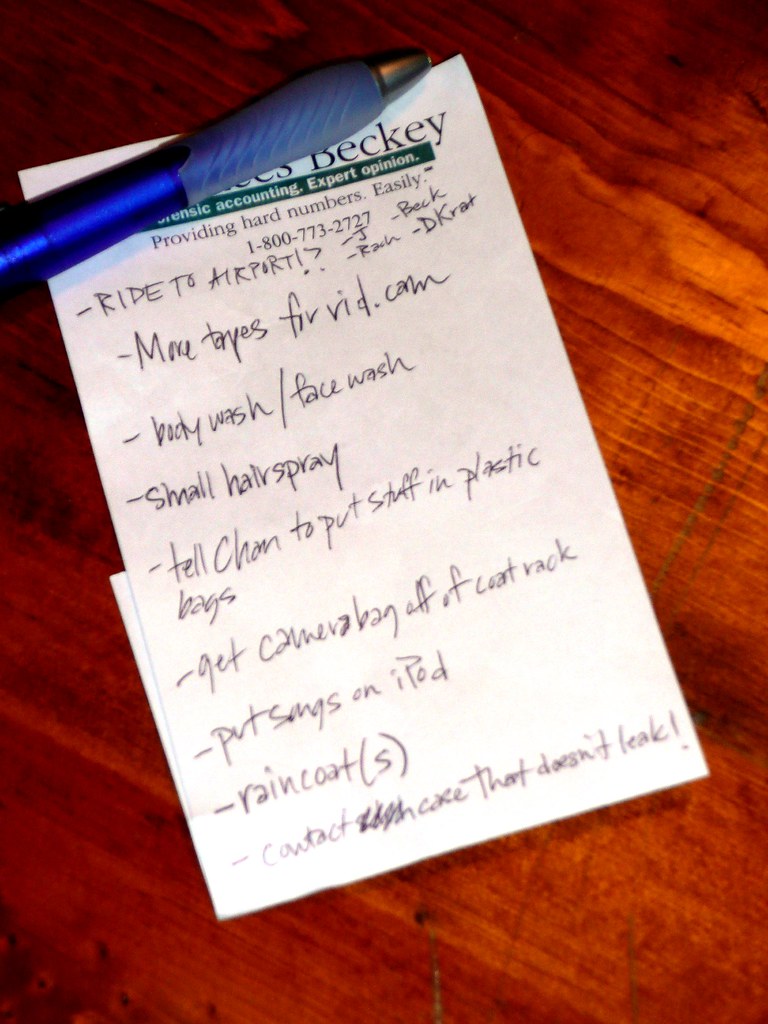If you read last week's post on aligning your environment and got bogged down in the decluttering process, then hopefully, today's post can help you to remove the clutter and align your environment with your goals.
STARTING
1. Figure out how much time you wish to spend on decluttering
2. Decide what you want your place to look like once it's clutter-free
3. Figure out what the source of the clutter is. Is it from items that you're buying and collecting? Unused gifts that people are giving you? An overdose of retail therapy?
4. Decide how much is manageable for you or your space right now. Perhaps you're OK with reducing your dishware, excess electronics and old clothes but you hedge at giving away your CDs. Instead of depleting your CD collection, decide on a "reduction" number that is manageable for you and that truly feels as if you're making progress on decluttering. On the other hand, you can accept that right now you're not ready to part with your CDs while you are willing to remove other items from your life.
DOING
1. Select a room, area or theme to your decluttering process. (By theme, I mean, you may have an excess of T-shirts or decorated soaps that you want to remove from your space)
2. If you choose a room, focus on one task at a time. If you skitter from one part of the room to the next, it's going to be hard to see the progress that you're making; however, if you focus on one area/theme then it's easier to stay inspired and to see your progress.
3. If while decluttering you feel overwhelmed and berate yourself or others for the clutter, then pause, take a deep breath and congratulate yourself for taking action on the clutter. Better to applaud your current action then to criticize yourself for your past behavior.
4. This tip contradicts #2 but if you're getting discouraged with the progress you're making on one area, then shift your focus to an area that's easier to declutter. Once you're inspired by your accomplishment in that area then use that inspiration to energize you for the harder to declutter spots.
5. Have patience. As with gaining weight, it probably didn't take 3 days for the clutter to build up so it may take a month or more for the clutter to be removed. The important thing is to be consistent with your decluttering process.
6. Take a pic. Some time ago, I read this tip in a book on organizing your space. Essentially, if you're having difficulty removing an item because of sentimental reasons, you can take a photo of it as a keepsake. This tip may sound a bit strange but it gives you a way to release the item while you still have something to remember it by. For myself, the idea of taking a photo of a cherished item is enough to cause me to relinquish it.
7. The holding zone. For items that you find it hard to make a decision on, you can box them away to see if you should later need the item.. You should put a date on your calendar when you'll donate the box if that's what you decide to do. Ideally, you're supposed to give away the unopened box once its expiration date is up. I've had so-so success with this in that items which I've kept in the holding zone suddenly gain some value for me and ease their way back into my wardrobe/onto my bookshelf.
8. Removing. The choice is yours as to how you want to remove your clutter. Selling, donating, recycling and re-using are all possibilities.
MAINTAINING
1. Decide on a monthly, quarterly or yearly schedule of decluttering.
2. Figure out what new habits, you'll establish to curtail the clutter. Will you use the something-in, something-out approach? Will you limit your monthly purchases of a certain item? What daily or weekly habit will you adopt to keep the your space reasonably free of clutter?


